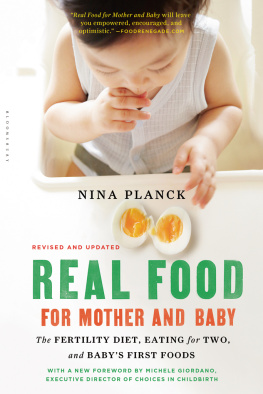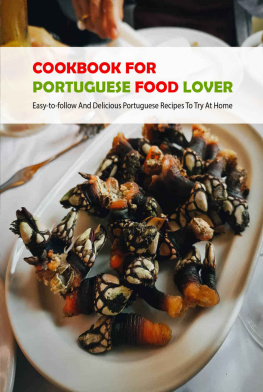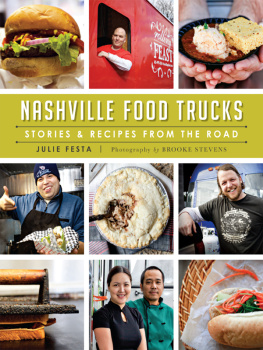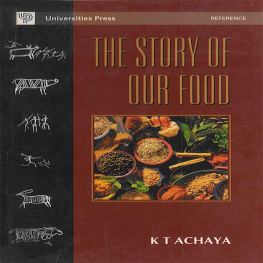GREEN CHILI AND OTHER IMPOSTORS
FoodStory
Nina Mukerjee Furstenau, series editor
GREEN CHILI AND OTHER IMPOSTORS
Nina Mukerjee Furstenau
University of Iowa Press
Iowa City
University of Iowa Press, Iowa City 52242
Copyright 2021 by Nina Mukerjee Furstenau
All rights reserved
Printed in the United States of America
Design by Nola Burger
Text: 11/15 Whitman | Display: Akzidenz Grotesk; Zeitung Pro
No part of this book may be reproduced or used in any form or by any means without permission in writing from the publisher. All reasonable steps have been taken to contact copyright holders of material used in this book. The publisher would be pleased to make suitable arrangements with any whom it has not been possible to reach.
Printed on acid-free paper
Library of Congress Cataloging-in-Publication Data
Names: Furstenau, Nina, author.
Title: Green Chili and Other Impostors / by Nina Mukerjee Furstenau.
Description: Iowa City: University of Iowa Press, [2021] | Series: FoodStory | Includes bibliographical references and index.
Identifiers: LCCN 2021005208 (print) | LCCN 2021005209 (ebook) | ISBN 9781609387983 (paperback) | ISBN 9781609387990 (ebook)
Subjects: Furstenau, Nina. | Women, BengaliBiography. | CookingIndiaBengalForeign influences. | Cultural appropriationNutritional aspectsIndiaBengal. | Cooking, BengaliForeign influences.
Classification: LCC TX749.F87 2021 (print) | LCC TX749 (ebook) | DDC 641.3dc23
LC record available at https://lccn.loc.gov/2021005208
LC ebook record available at https://lccn.loc.gov/2021005209
The pen-and-ink illustrations of chilies throughout and the illustrations on is reprinted with permission of the author, Naomi Shihab Nye.
For Terry
Let agreeable things be given away.
Let agreeable food be eaten.
The Mahabharata of Krishna-Dwaipayana Vyasa
CONTENTS
ACKNOWLEDGMENTS
I BEGAN THIS BOOK as a Fulbright-Nehru Global Scholar in Kolkata, India, and I thank the Fulbright program, generally for its mission of international education as a force for peace and personally for allowing me the wonder of being in India for nearly nine months of research. I cherish knowing the Fulbright administrators in Kolkata, especially Shevanti Narayan, Sumanta Basu, and Sima Bhattacharjee, as well as my program host, Jayanta Sengupta at the Victoria Memorial in Kolkata. My husband, Terry, and I are happily grateful to Dipankar Dasgupta and Krishna Sarbari Dasgupta for their many kindnesses and experiences of adda.
I cannot thank my family in India enough, most especially for their warm welcome and their help with my rather frequent questions: Susmita Mookerjee, Tapan and Nandita Chowdhury, and Suchitra Mukherjee in Kolkata and Rajat Chowdhury in Bhandarhati as well as Anuradha, Rahul, Basudha, Mahika, and Rajat Banerji in New Delhi. My heartfelt gratitude to my artist uncle, Mohan Banerji, who created many of the wonderful illustrations for this book, and Sheila Banerji for their continuing love and support. And a tip of my hat to our intrepid niece Paula Green and her super note-taking abilities during her visit with us in India.
Many, many people took the time to talk with me about Indian food, connected me to those I needed to see, and let me taste wonderful things. I am grateful to Brunnel Arathoon and Anthony Khatchaturian, Kastura Bandyopadhyay, Paula Banerjee, Sharmistha Banerjee and her lovely parents, Dipen and Ria Banerjee, Subir and Haimanta Banerjee, Bela Rani Devi and her family, Oindrilla Dutt, Bomti Iyengar, Monica Liu, Shireen Maswood, Salmolie Mukerjee, Bijoy and Asha Mukherjee and their daughter Prakriti, Srikanta Pramanik, Utsa Ray, Priyadarshini Ghosh Shome, Jael and Flower Silliman, Sandhya Singh, and many more.
My deep thanks to my agent in India, Preeti Gill, editors Aienla Ozukum and Kanika Praharaj at Aleph Books, and director James McCoy and editors Susan Hill Newton and Holly Carver at the University of Iowa Press. You are all amazing.
In Kolkata, I will never forget my introduction to the cultural life of the city that informs this book and the yoga retreat at the beautiful Balakhana Estate in Maheshganj, and I thank my friends Benigna Chilla, Milena Chilla-Markhoff, Ellie Choudhury, Samanta Duggal, Anita Kanoi, Shreya Kanoi, Rebecca Lind-land, Jael Silliman, and our hosts in Maheshganj, Kalpana and Ranodhir Palchouduri, for the delightful experience.
A huge tip of the hat to my intrepid recipe testersyou were amazing!David Baker, Kandace Davis and the gang of fiveLisa Burke, Carol Migneron, Jane Small, Caroline Tice, and Jill WehmerLe Greta Hudson, Kim Naki James, Kate Lebo, Jessica Martin, Laura McHugh, Jill Orr, Katherine Reed, Sharmini and Dahnya Rogers, Lynn Rossy, Cathy Salter, and James Prakash Young. I hope that you will come over sometime for a feast I create.
I cannot thank my early readers enough: Rahul Banerji, Jill Orr, and Jayanta Sengupta. It was a huge honor to have your perspective. As always, I send my heartfelt gratitude to my writing circle: Anne Breidenbach, Jennifer Gravley, Laura McHugh, Jill Orr, and Allison Smythe.
And to my family, Sachin and Sipra Mukerjee and Terry, Nate, and Anna Furstenau, thank you, thank you, thank you for keeping my spirits up and putting up with my crazy transcontinental life while I researched this work.
AUTHORS NOTE
NOT LONG AFTER I ARRIVED in the City of Joy, I was described as a fish returned to its water, although occasional sidelong looks offered a mildly different assessment. To be sure, I felt I was swimming in benevolent seas, happily chortling between meals. Though fully aware that the imagined India of my childhood in Kansas and my sandals-on-the-ground, dust-between-my-toes self in Kolkata were not always in alignment, my time there birthed this book, one distilled version of the possible. The foods that I highlight in Green Chili and Other Impostors are markers of shifts in the culinary story of Bengal as noted by the journey of a Bengali girl from Kansas, not a comprehensive history of the heritage foods of the region. Like you, my experiences sieve the world.
Some iconic ingredients in India, thought to be native, journeyed far and wide to arrive there, sailing under the colors of foreign ships, exchanged by very early travelers, or possibly catching a lift with an energetic bird. When does an adopted food become a keenly held tradition? The flavors of the subcontinent, transformed by cooks and caring, feasts and fasts, and thoughts on food as medicine, enveloped multitudes and eras. Other ingredients left the subcontinent and were adopted, assimilated, and performed heroically elsewhere in terms of taste, health, and nutrition.
This book is a recipe for you to test on the tongue and in your heart. The foods on your platethe infinitely tender sensory moments of savoringreveal history as almost nothing else can. Check out the textures. Assess the aromas that rise. I have followed these recipes and relished the results. The dishes created are pukka: absolutely first class or, more modestly, solid and genuine and tasty. See if you agree.
If I had held a crystal up to the Indian sun during the three seasons I lived on the subcontinent, its refracted light would have revealed what I sometimes missed: a flower peeking from a crack in a busy street, a shrine embedded in a sidewalk tree parting foot traffic with not one bit of trash tangled in its roots, dust motes tumbling through slanting rays at sunrise to slip into the homes of numerous small animals secreted away: everyday brilliance. With or without the crystal to illuminate these details, my time did reveal that though I am no longer in India, my spirit swims there free.
Next page









